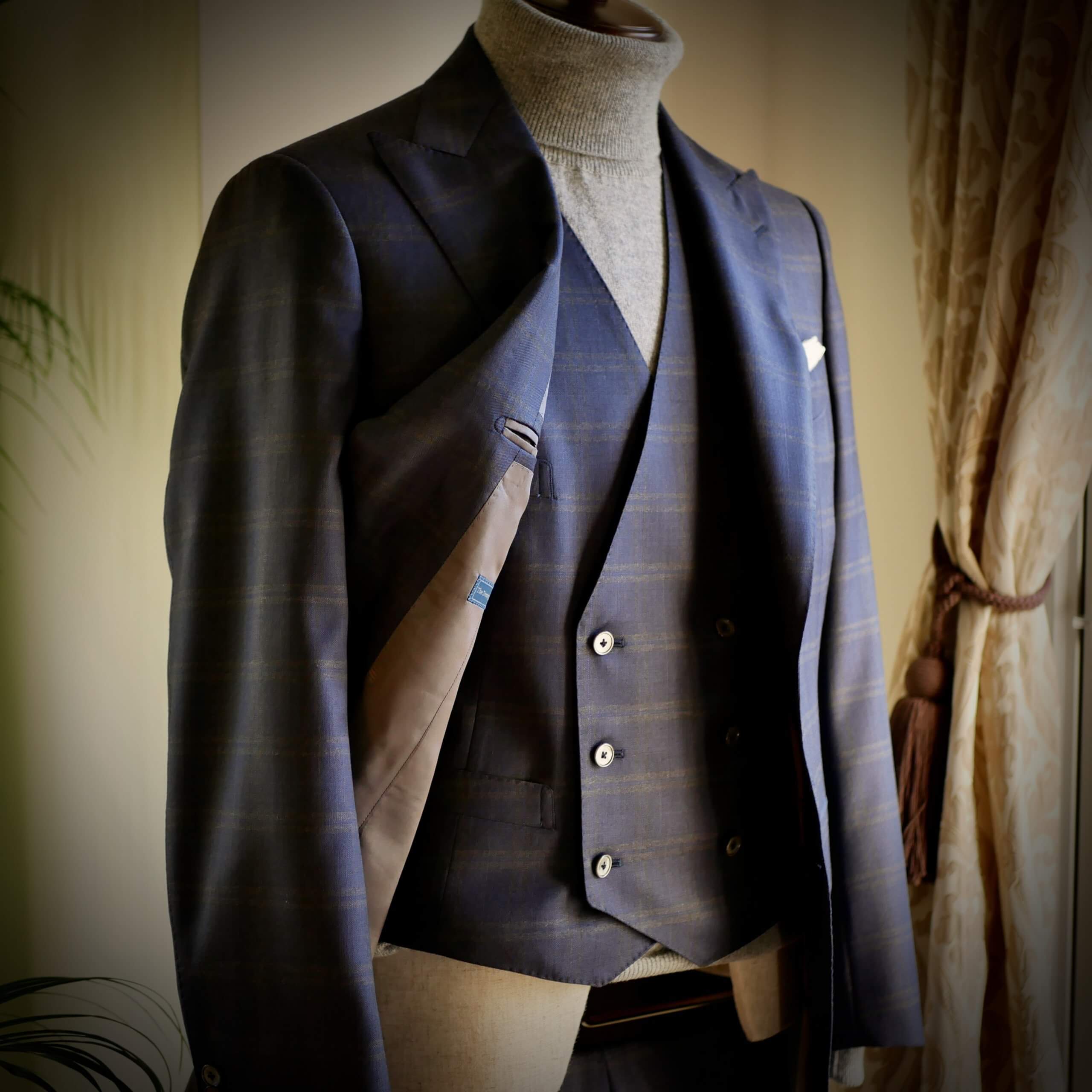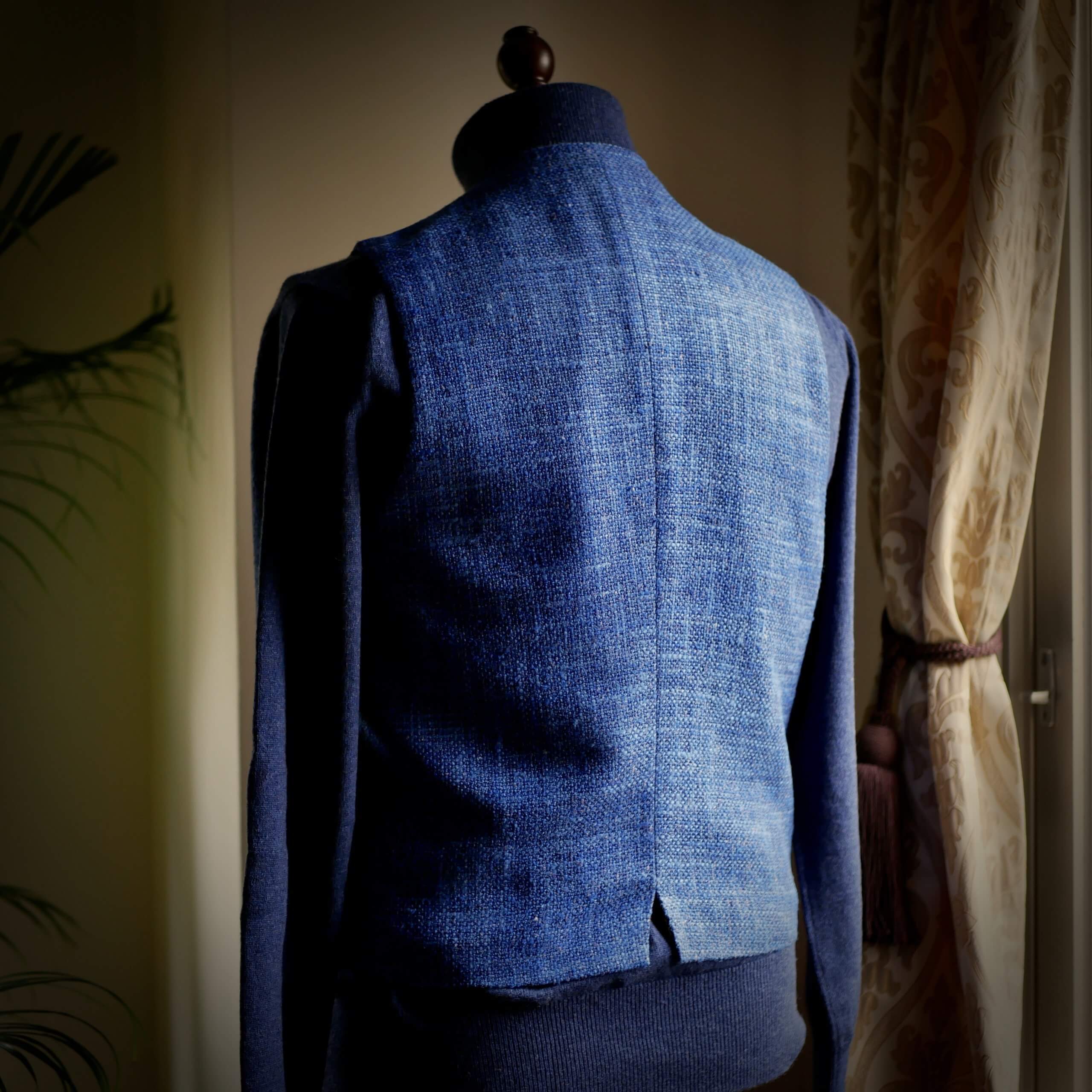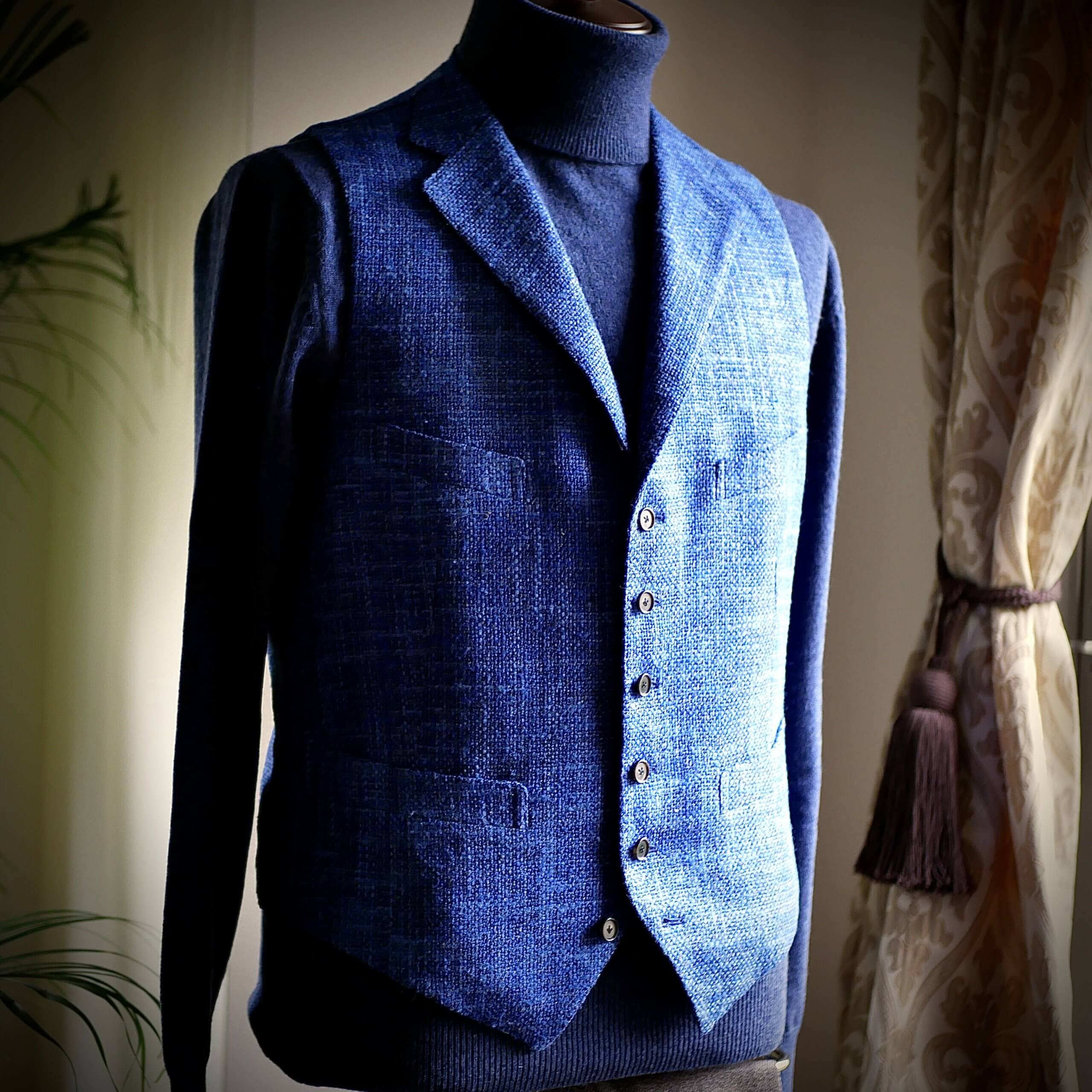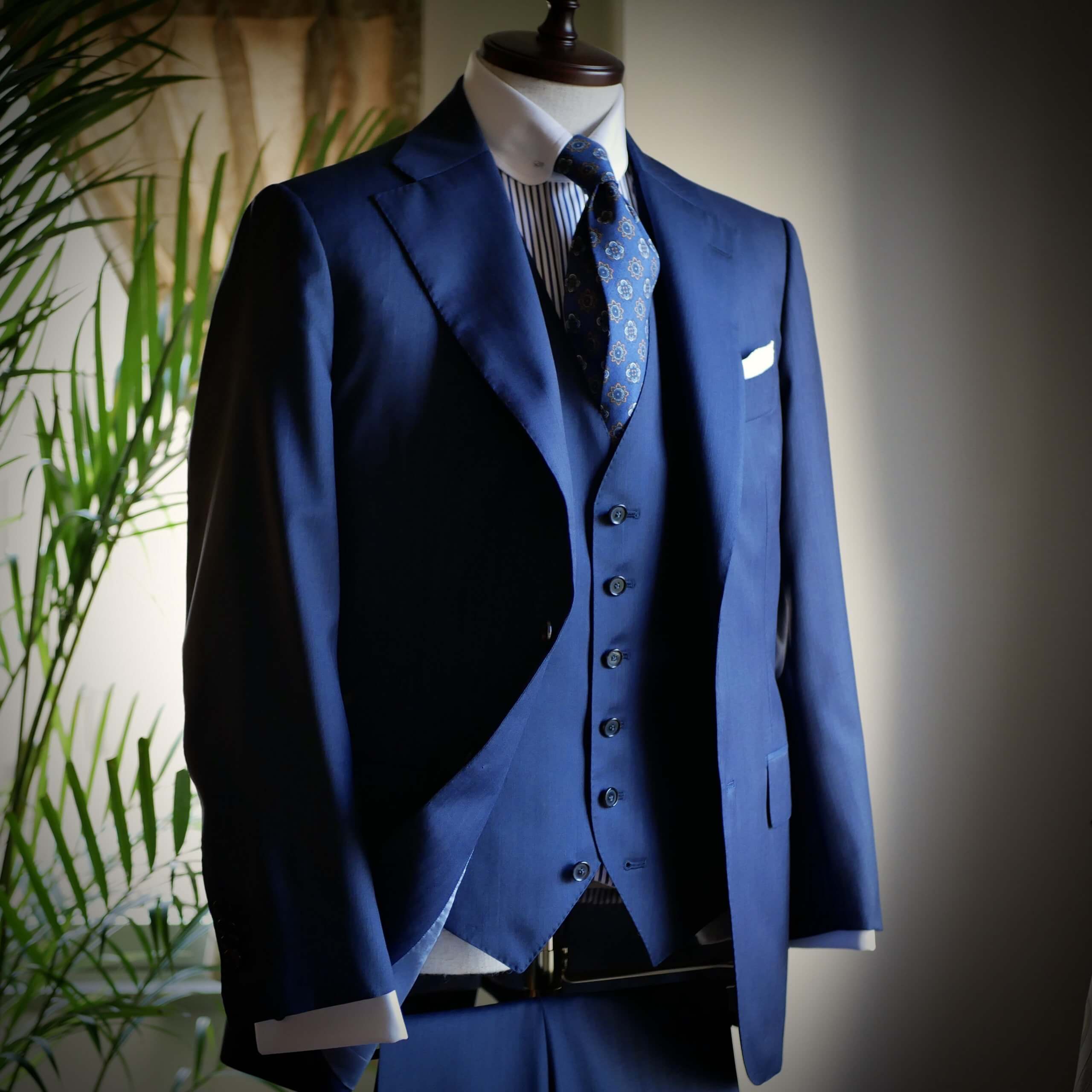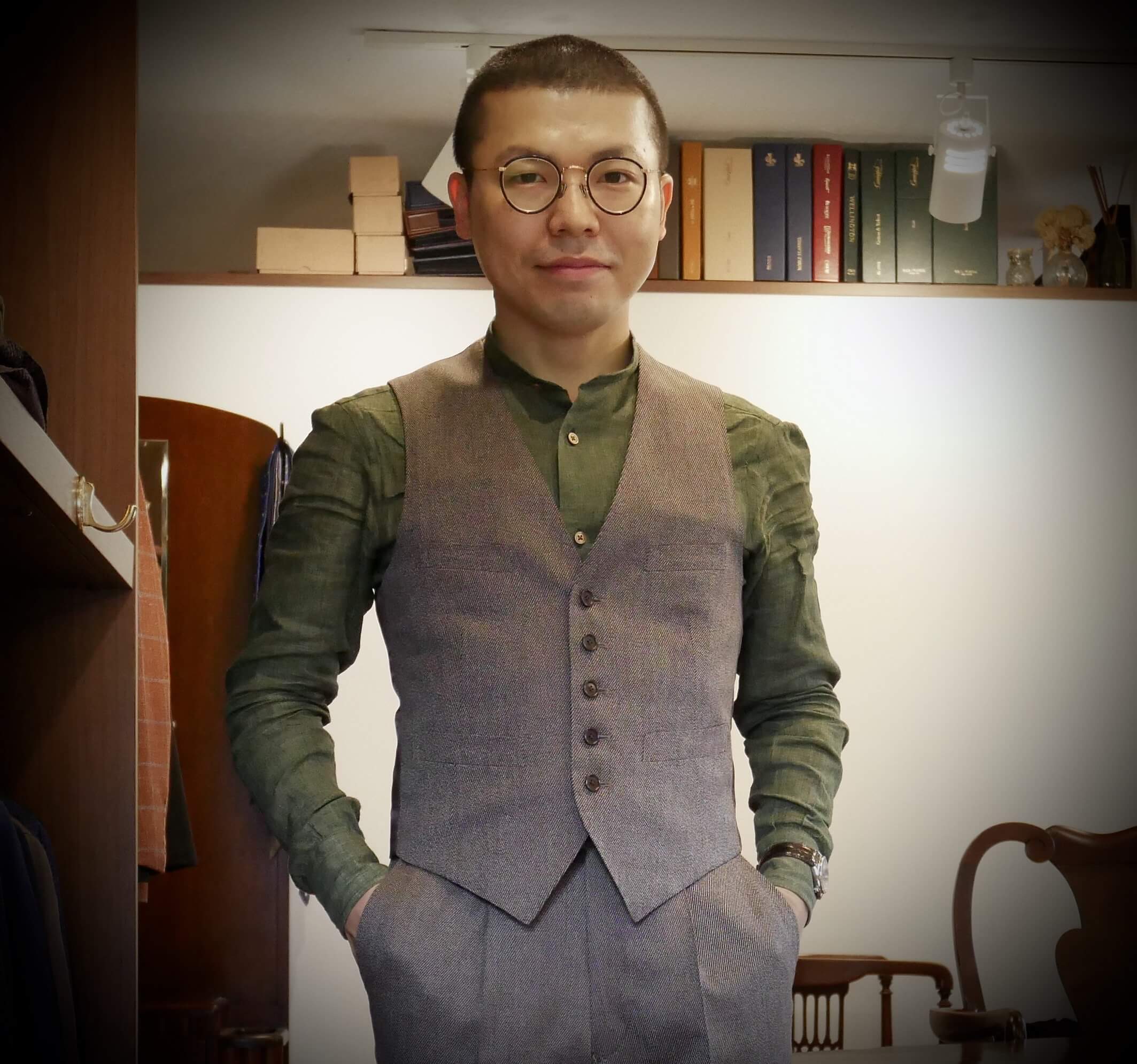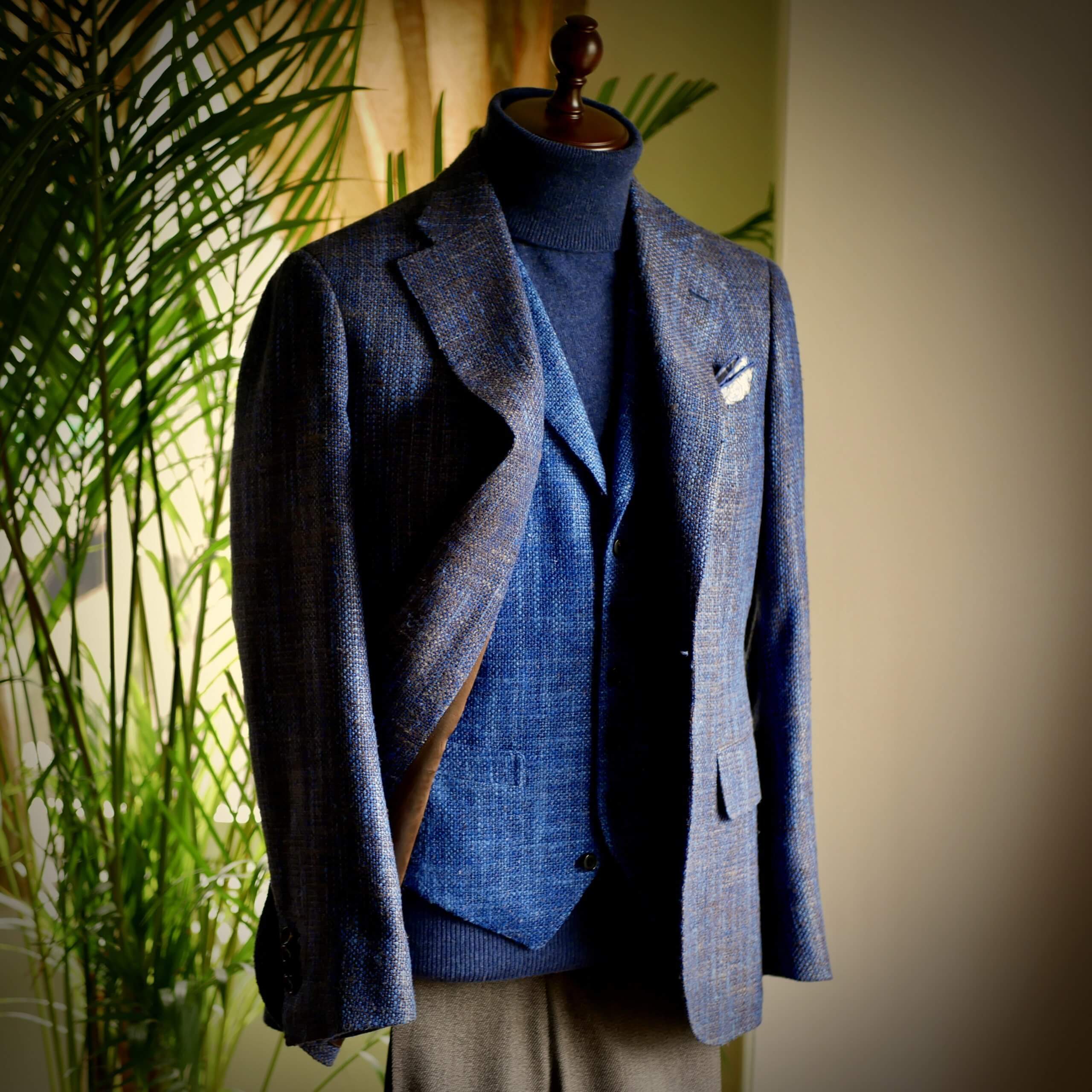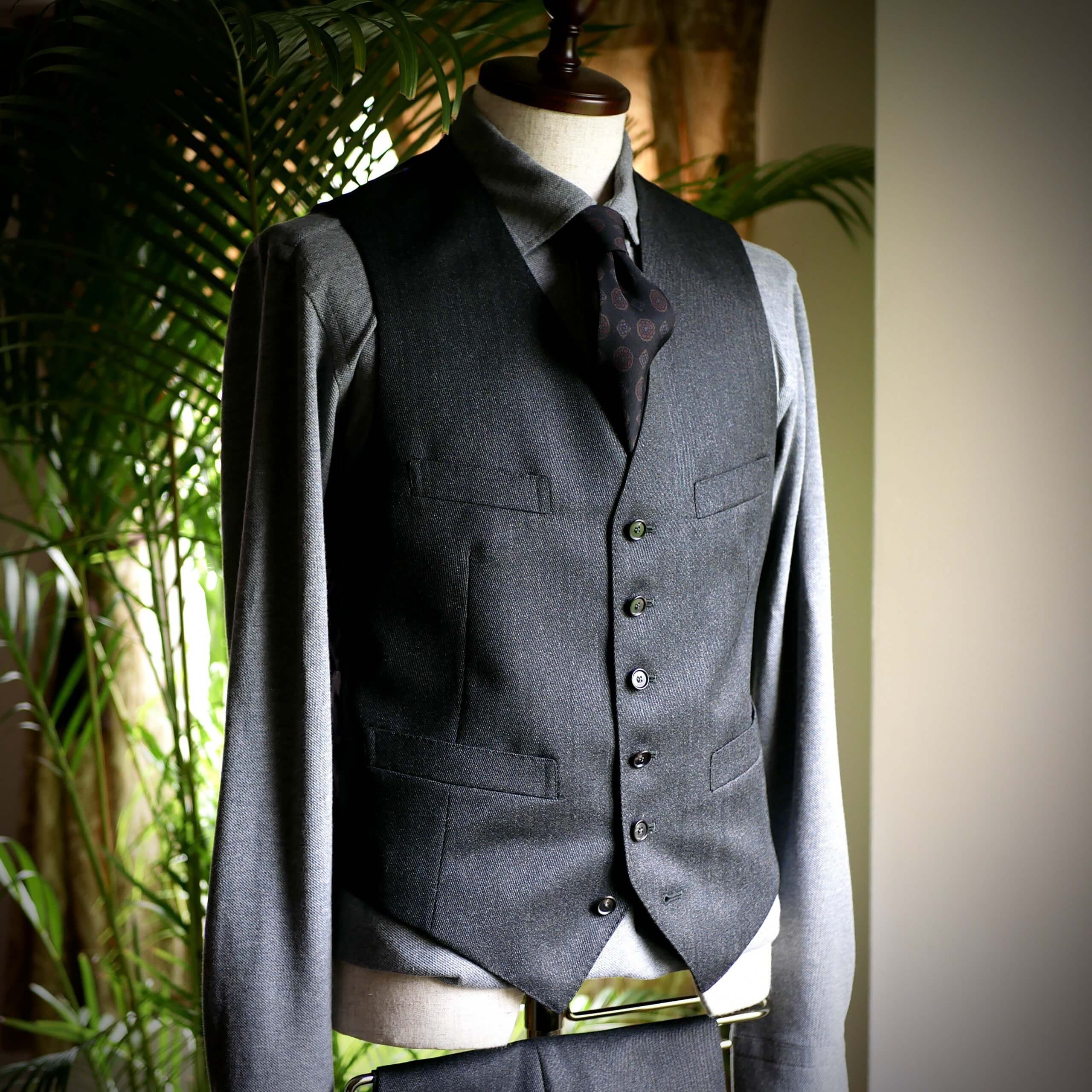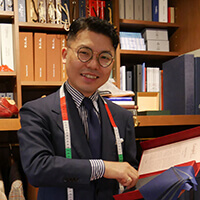About Tailoring at The Dressing Lab. Lead Time & Pricing Overview. Click here for more details.
This is an appointment-only establishment. Please book your desired visit date through this link.
Dress Line "Vest"
I would like to introduce you to The Dressing Lab's custom-order menu item, the "Vest". The term "Vest" is known by various names such as "Waistcoat" and "Gilet", but we refer to it as "Vest" at our store. Our vests are crafted with the same concept as our jackets, featuring a soft and three-dimensional tailoring. While they provide volume at the chest, the waist is shaped to ensure a fit that not only complements the body but also enhances the body line beautifully when the jacket is removed. For collared vests, customers can enjoy the three-dimensional collar roll.
Many people today may perceive the vest as a special item for formal events or fashion statements, but originally, a vest was not considered anything special. Wearing a vest with a suit was quite common. In fact, a complete suit used to mean the combination of a jacket, a vest, and trousers.
The origin of the modern suit traces back to the 17th century, specifically to a clothing reform proclamation issued by King Charles II of England, aimed at encouraging frugality among the nobility. This proclamation advocated a new style of dressing that led to the modern suit: a coat, vest, trousers, shirt, and tie. This style quickly spread and became hugely popular among nobility throughout Europe, including in England and France.
However, the original vest, quite unlike the modern ones, was a long, sleeved garment. Despite this, elements leading to the contemporary vest are clearly identifiable. For instance, it was customary to button it up completely, covering the shirt underneath (in contrast, it was a rule to leave the overcoat unbuttoned), and due to the objective of frugality, the sleeves and back, which were hidden under the coat, were made of thinner, different fabric (using lining on the back, apart from making it slide easily, is also a remnant of these original vests). Furthermore, it was essentially an undergarment for the coat. This shows that the role of the vest has remained consistent over time. Initially, as jackets' sleeves became slimmer, vests lost their sleeves and shortened to waist-length, gradually evolving into their current form.
Consider this: in 17th century England, the suit dress code was established, consisting of a jacket (then known as a coat), vest, trousers, shirt, and tie. The vest was not just for formal or fashionable occasions, but an essential part of the suit. As fashion trends and dressing rules relaxed over time, showing the undershirt became acceptable, and consequently, the vest, which originally served to conceal the shirt, started being omitted. The perception of the vest as formal arises because traditional dress codes, especially in formal and semi-formal attire, still persist, reflecting a demand for traditional and dignified styles in formal settings. Originally, a suit was incomplete without a vest, adding both visual appeal and a sense of refinement. I encourage you to enjoy wearing vests with this historical perspective in mind, elevating both your appearance and style.
Now, let's talk about the fit (sizing) of vests. While the fitting of jackets and trousers is important, I believe that vests particularly warrant custom-tailoring. Being an undergarment for the jacket, a vest must fit snugly against the body. While there might be some leeway around the waist depending on preference, the chest area must fit just right. A well-fitted vest not only feels comfortable but also has the effect of making the wearer look more robust and well-defined.
The length of the vest is also crucial. Ideally, when standing upright, the vest should cover half to all of the waistband of the trousers. If the vest is too short, such that the trouser band is fully visible while standing straight, it can lead to unsightly issues like the shirt peeking out between the vest and the trousers or the back becoming exposed when seated. Conversely, a vest that's too long can make the torso appear elongated and lose its sharpness. When wearing a vest, careful adjustment of its length is necessary, considering the rise of the trousers. This is why we highly recommend custom-made vests.
In addition to wearing a vest as part of a three-piece suit made from the same fabric, we also recommend the "Odd Vest" style. An Odd Vest refers to a standalone vest or a replacement vest. It can be paired with a suit or jacket, worn over a shirt and trousers for a more complete look, or even layered under a coat in winter. Sitting between outer and inner layers, vests not only play a role in temperature regulation but also serve as a stylish accent, bridging inner and outer wear. Regarding fabric, while plain fabrics are fundamental for formal Odd Vests, considering versatility, materials with texture, even in plain colors, or patterns like checks are ideal for Odd Vests. If you let us know the suits or jackets you'd like to match, we can suggest the best Odd Vest fabric for you. Please feel free to rely on us for this.
There are various design variations for vests. The basic design is a collarless single-breasted with six buttons (five of which are fastened, leaving the bottom one as a decorative unbuttoned element). However, we also offer models with collars, double-breasted styles, and suggestions for formal occasions. Whether you choose to wear a dark suit as a three-piece for a classic look or enjoy a unique style with a versatile Odd Vest, once you start wearing a vest, you might feel incomplete without one. We invite you to The Dressing Lab to order a vest that perfectly fits both your physique and style preferences.
About Tailoring at The Dressing Lab. Lead Time & Pricing Overview. Click here for more details.
This is an appointment-only establishment. Please book your desired visit date through this link.
Vest
Photo Gallery
The Dressing Lab specializes in bespoke tailoring. While we can tailor most items given some time, we do not have ready-to-wear garments available for immediate purchase.
We deal exclusively in high-quality custom-made items, requiring at least one month for completion of any piece. For those desiring bespoke services or in cases where fittings are necessary due to body shape, it may be required to visit our salon 2 to 3 times.
We kindly ask for your understanding of the above conditions before placing an order. We eagerly await your consultations and reservations.
*Please make sure to reserve an appointment before visiting our store.
We gladly welcome appointments for consultations or viewings, so please don't hesitate to reach out to us.
